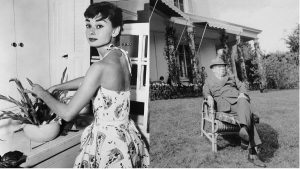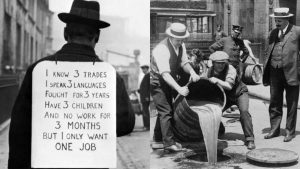Little-Known Facts About Pitcairn Island
When a group of mutineers commandeered their vessel in the 1700s and stumbled across a remote island, they had no idea of what was to come. Situated 3,240 miles from the coast of New Zealand, the British territory has a rich and complicated past.
In recent years, the island became famous for a highly-publicized abuse scandal that saw a large portion of the tiny population placed behind bars. Let’s take a look at the complex history of life on Pitcairn Island, a place that fewer than 100 people call home.
Pitcairn Island’s Highest Population Was Still Incredibly Small

For an island that measures two miles long and one mile wide, it’s probably not surprising that few people have ever lived on it. In the 1930s, the population hit its peak with around 200 inhabitants. As the years have gone by, the aging population has dwindled.
These days, fewer than 50 people called the island home. Even the island’s administrative offices aren’t actually situated on Pitcairn. They’re based 3,300 miles away in Auckland, New Zealand. Despite an effort to repopulate the island, few are interested in uprooting their lives to join the society, which has faced its share of controversy.
The Mutiny On The Bounty

The tale of the mutiny is incredibly interesting. In 1787, Fletcher Christian was the first mate on-board HMS Bounty, when it headed to Tahiti on a breadfruit expedition.
The band of mutineers got rid of their captain by putting him on a small boat with eighteen of his loyalists and sending him out to sea. Christian and his allies commandeered Bounty and along with six Tahitian men and eleven Tahitian women, they stumbled across Pitcairn, making their home.
Fletcher Christian’s Death And His Descendants

Life wasn’t as idyllic as Christian and his friends had hoped. With so many men and few women, things soon became unsettled. Accounts of what happened over the next few years are varied. In 1808, a seal-hunting ship called Topaz visited Pitcairn, only to find one lone man, John Adams, on the island with nine women.
One woman claimed Christian was shot when tensions rose between the Tahitian men (who were treated like slaves) and the mutineers. Christian’s sons Thursday and Charles, daughter Mary Ann, and his wife, Maimiti survived him. Everyone named Christian on Pitcairn and the Norfolk islands are direct descendants of Fletcher. Pictured is eight-gen descendant Samantha Christian in 1994, aged 20.
They Traveled Via Wheelbarrow

While being an island so remote has its advantages, like unmarred scenery and an endless expanse of horizon, it has some obvious drawbacks. Reaching another country isn’t easy, and is seldom done now in the modern age. With that being said, the island was always terribly out of touch with advancements.
It’s said that their most advanced form of transportation was a wheelbarrow up until the 1960s. This is just one example of how painfully out of touch the inhabitants of Pitcairn were. Now, motorbikes are used to get from A to B, although given its size, it’s not difficult to just walk.
Most Pitcairners Live In And Around Adamstown

The majority of islanders live in and around Adamstown, the place where the original mutineers settled and named. Situated on a northerly slope around 120 meters above sea level, the town covers 20 hectares. The main road is called the Edge, running parallel with the coastline.
In order to get to Adamstown, visitors have to navigate a steep road called the “Hill of Difficulty”. The mutineers made their way up this road, carrying their loads with them as they went. Thanks to the incorporation of quad bikes and tractors, loading up with supplies is easier these days – although not by much.
The Houses Are Simple

The houses on the island are simple, with corrugated iron roofs. They’re designed to collect rainwater, which trickles through guttering and pipes into private tanks and wells for islanders to drink. For a long time, inside kitchens were unheard of, with many using outdoor set-ups.
Hot water is heated by burning the copper, although a lot of houses now have gas water heating, too. Some homes still have old-fashioned outhouses, but a large majority now have flushing indoor toilets. Houses now have modern appliances like fridges, but Pitcairn was late to the game. Even now, electricity is powered by a generator that switches off at 10 pm sharp.
There Isn’t A Hospital On The Island

Wherever there are people, there’s going to be the need for some sort of health care. Although Pitcairn has a small clinic that can tend to basic ailments, there isn’t a hospital. That can make it incredibly difficult if someone falls gravely ill.
In general, islanders travel to New Zealand to give birth or to receive treatment for serious medical conditions. If someone requires long-term care, this can be hard for families who either have to say farewell to the island for good or travel back and forth. The latter is difficult, as it requires a 32-hour boat trip to Tahiti, a flight to Mangareva, then a flight to NZ.
Supplies Come In Every Three Months

Being so far away from any major city – or country for that matter – means that Pitcairn is heavily reliant on supply ships. While there is a General Store situated in Adamstown, the island only receives supplies every three months or so. These can be delayed if bad weather disrupts it.
Some fruits and vegetables are grown by islanders, but other items from supermarkets, etc are brought in on the boats. For many people this would pose a problem, but for Pitcairners it’s just the way of life. Decades ago, supply boats were far less regular. For the first settlers, they were non-existent.
Pitcairn Is The Subject Of Multiple Movies

Pitcairn has an interesting history, so it didn’t take Hollywood long to try and make money off it. The 1962 movie is based on the novel, Mutiny on the Bounty, which follows the story of the mutineers. Although this was the third movie to be made on the subject, it’s the most well-known. Marlon Brando starred as Fletcher Christian.
Prior to this, the lesser-known movie The Women of Pitcairn Island was released. This fictional account focuses on the females of the island, who are left widowed after the male settlers all pass away. New stranded sailors arrive, creating tension and upset throughout Pitcairn.
“Bullies And Squabbles Govern Daily Life.”

For some, the island is the only place they’ve ever known. For others venturing to try out the island life, it falls short of expectations. Dea Birkett spent several months on Pitcairn, but according to her it was anything but idyllic.
“Adamstown, the capital and only settlement, is a tortured sea-surrounded village, thwart with divisions, where bullies and petty squabbles govern daily life,” wrote Birkett in an article for The Spectator. “Far from feeling free, conformity on Pitcairn is so strong that even holding hands in public is forbidden by law. The 38 islanders may be the descendants of mutinous rebels, but they’re too terrified to object even to the very worst of treatment among themselves.”
Land Is Free

As part of a program to encourage people to move to Pitcairn, there are currently no charges for the land. As we’ve previously mentioned, the number of islanders is dwindling at a rapid rate. There are no charges for settlement, so those wishing to move there could easily do so.
However, people looking to set up home on Pitcairn must be able to prove that they can financially support themselves. That includes building a house or somewhere suitable to live, and enough money to comfortably sustain their lifestyle. As jobs on the island are virtually non-existent and the cost of living is high, it’s essential.
There’s A Prison – And The Convicts Helped Build It

When Mayor Steve Christian and the other defendants were found guilty of the abuse charges in 2004, they were sent to prison. Only, Pitcairn didn’t have one at the time. One was purposely built for the men to serve their time in. Christian and his future cellmates helped to build it, but it’s not like other prisons you see around. It’s quite cozy.
The British government also sent four policemen to the island, making Pitcairn the most policed place per capita in the whole world. The conviction of the men and their subsequent jail time caused a lot of upset in the community, dividing families. Pictured is the courthouse.
There’s A School, But It Rarely Has Students

Children are few and far between on the island, but there’s still a school. Afew years ago, there were just three students enrolled. As you might expect from a small community, children often grow up to leave the island, wanting to see more of the world.
Many teenagers travel to New Zealand to further their education, either to attend high school or college. It’s this that’s having an effect on the island’s population. Decades ago this was seldom heard of, as islanders were born and lived out their lives on the island. The majority of them never left at all.
The Islanders Only Keep Goats For Religious Reasons

Sometime in the 19th century, a group of Seventh-Day Adventists journeyed to the island and converted the population. To this day, the majority of Pitcairners follow the strict religion. Rules, such as no hand-holding in public, no dancing, and no alcohol were strictly adhered to.
However, in the 2000s the attitude toward alcohol loosened and booze became readily available. Goats are kept, but no cows and pigs. This is due to the strict diet followed by Seventh-Day Adventists. Despite these laws and rules, few Pitcairners go to church these days. One visitor reported just three people attending church a week.
Visitors Can Stay With Residents

Most big cities and islands have a hotel or two, but Pitcairn doesn’t. As the island is notoriously difficult to get to, there’s simply no need for it. Instead, visitors are encouraged to reach out to the residents and ask if they can accommodate. In most cases, they can.
One traveler spent his time with Steve Christian and his wife, Olive. According to him, the couple is friendly, like a good drink, and aren’t huge fans of the British Empire. Christian himself wants independence for the island after the scandal that shook Pitcairn. He feels they should be governed by their own laws. It costs around $200 per person, per night to stay with the Christians.
Trade With Tourists Is Lucrative

Given its history, tourists are keen to visit Pitcairn if they get the opportunity. Because of its remote location, this can be difficult. Fewer tourists visit the island than Pitcairners would like, but when they do, they really push the boat out.
One photographer found herself bombarded with stands of curio stalls selling wood carvings of fish, HMS Bounty t-shirts, and stamps. The latter was a successful part of the island’s economy until the rise of the internet. Even still, families can make up to $10,000 a year from trading with visitors. Other local wares like honey are also lucrative.
It’s Full Of Beautiful Wildlife

Despite its dark underbelly, there’s no denying that Pitcairn is a strikingly beautiful island. Rare breeds of poppy and other dense vegetation surround the scattered houses. Exotic birds abound, and the weather is just as you would expect. Hot summers reach from December to March, while winters are mild, from June to September.
There’s an awful lot of rainfall, totaling 63 inches per year. Its location lends itself to weather fronts brought by westerly winds as they pass through, so the island is no stranger to bad weather. While it may not be the place to put down roots, it’s on the bucket list of many seasoned travelers.






